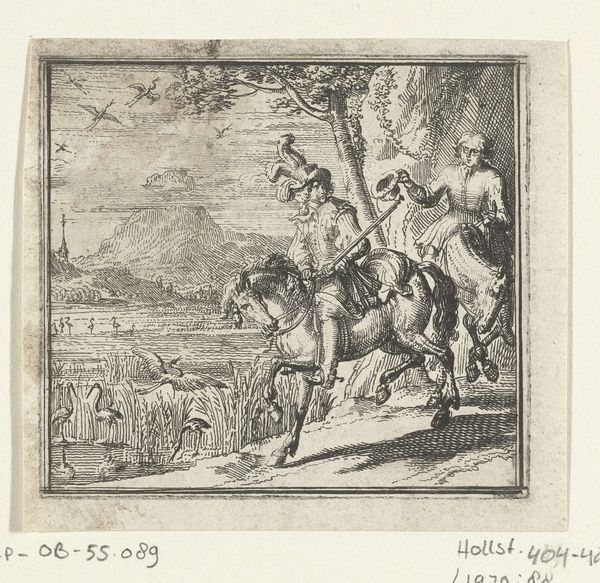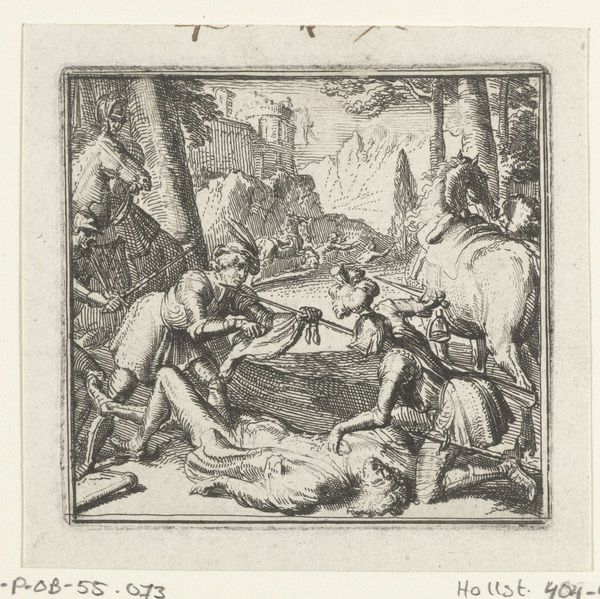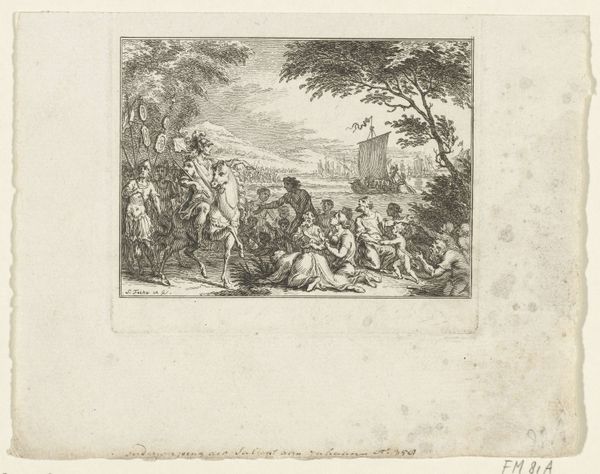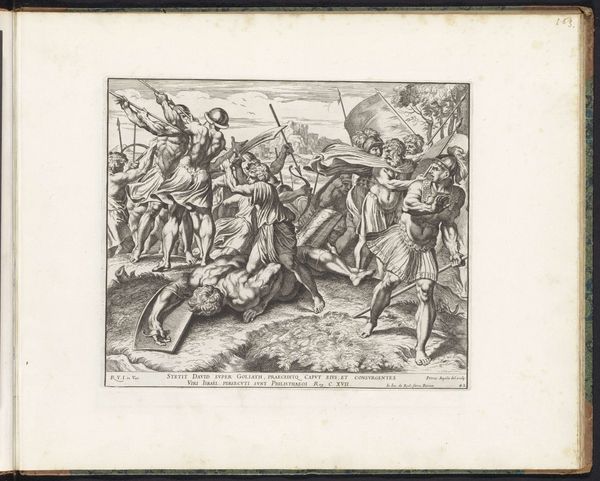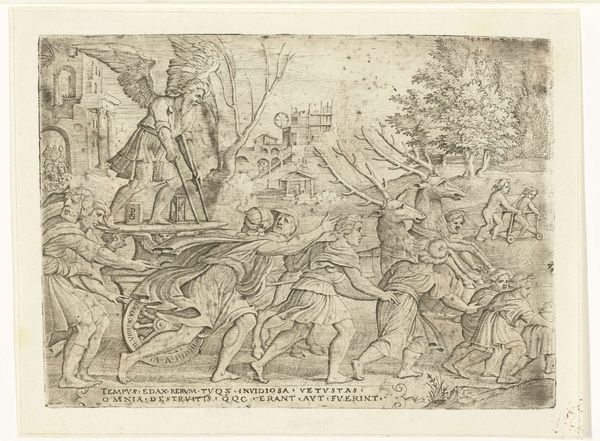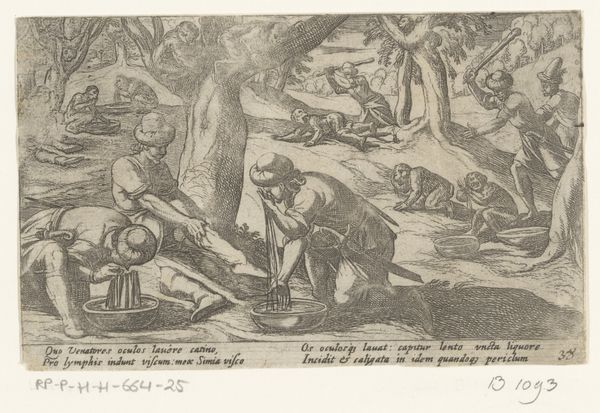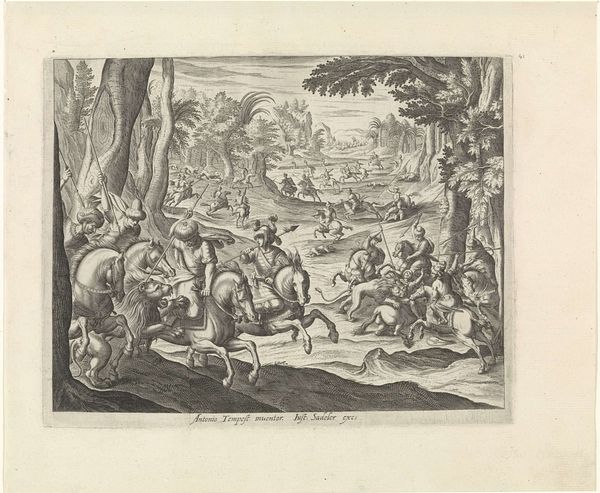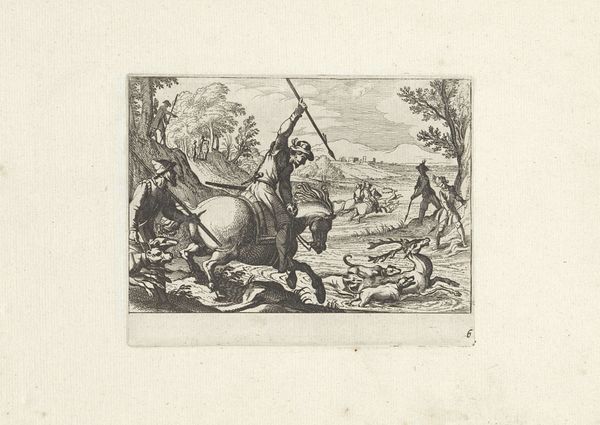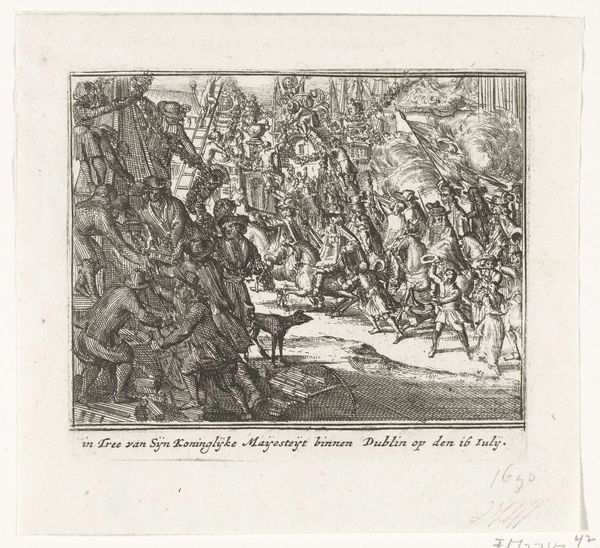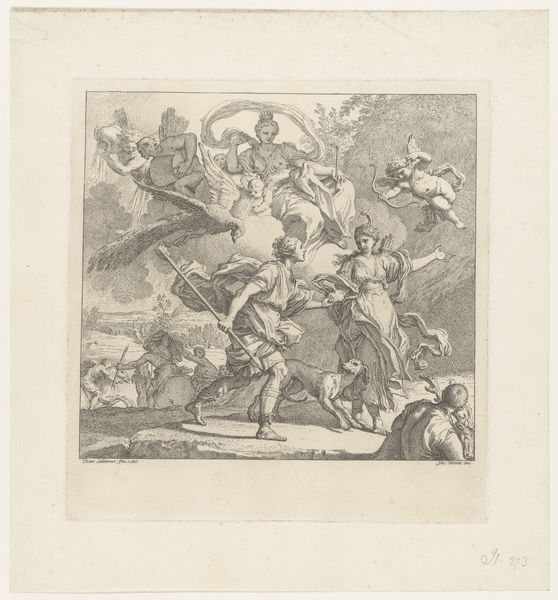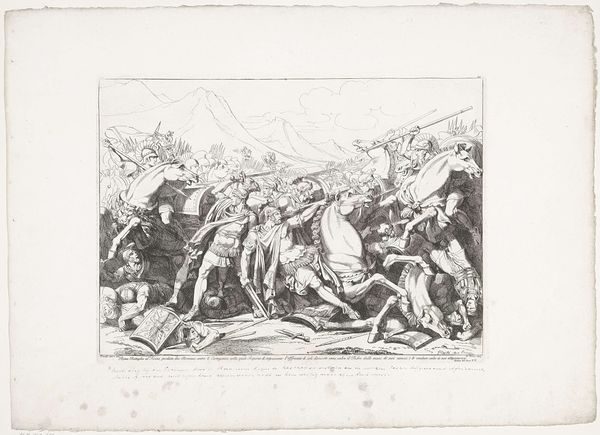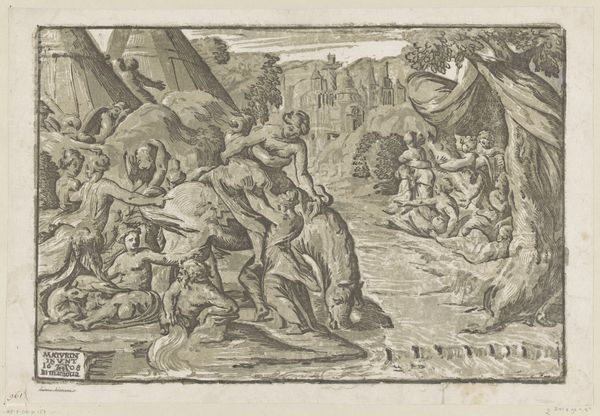
print, etching, engraving
#
narrative-art
#
baroque
# print
#
etching
#
landscape
#
figuration
#
history-painting
#
engraving
Dimensions: height 75 mm, width 80 mm
Copyright: Rijks Museum: Open Domain
Curator: The eye is immediately drawn to the intricate line work in this print. Editor: Yes, this etching and engraving by Romeyn de Hooghe, created in 1697, illustrates Boccaccio’s Decameron. The scene pulses with energy; I see figures intertwined in a dynamic clash. Curator: Exactly. De Hooghe uses hatching and cross-hatching to build volume and convey movement. Consider the figure in the center, draped, how the lines define the torso with such confidence. Editor: It feels staged though, doesn’t it? While technically proficient, the scene lacks a certain naturalism. Baroque art often sought to evoke grandeur. Looking at its time, The Decameron had a resurgence in popularity because of its humor. It challenged the church. Curator: You’re right. While it appears a chaotic battle scene, the composition is carefully controlled. The figures seem posed, almost as if on a stage. The architectural structures in the back of the print are less prominent. Do you see any of that is an allegory? Editor: Possibly. The stark contrasts between light and shadow amplify the drama. De Hooghe masterfully manipulates light to guide our attention. It invites the viewer to examine humanity's struggles. Curator: The narrative unfolds laterally across the composition. The battle with horses on the left and it then extends out towards the right of the print. The lines emphasize the chaos but ultimately focus on balance within. Editor: This print certainly captures the artistic ambition of the Baroque. This small etching serves as a great lesson in how prints from the 17th Century pushed narrative boundaries.
Comments
No comments
Be the first to comment and join the conversation on the ultimate creative platform.
